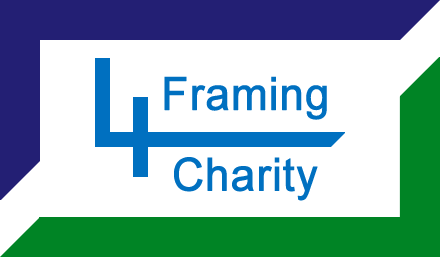 Fundraising from Picture Framing
Fundraising from Picture Framing
 Fundraising from Picture Framing
Fundraising from Picture Framing
Money is routed to charitable causes in 3 ways, as detailed below.
Whilst it is a basic principle that all labour is voluntary and no wages, salaries or dividends are paid out of income or profit, the business model is continually under review to ensure that pricing recovers all non-labour costs.
The Direct Donations option will be used when we support fundraising ventures for a specific charity. The two other options will be used for more routine work.
The amount a customer pays is split into two parts that are clearly shown on sales documents:
The charitable donation is accounted for separately from all other income and, therefore, can be identified and quantified at any time in the accounts.
Click here to see an example invoice with a Direct Contribution
The amount a customer pays is shown on sales documents as a single price.
As above, the single price recovers the cost of materials used and expenses incurred in making the frame but additionally includes a donation to a designated charity that is not shown on the sales document.
At the end of an accounting period all Indirect Donations collected during that period will be paid out to the various designated charities.
Click here to see an example Invoice with an Indirect Contribution. The invoice value has been rounded up with a charitable contribution to a designated charity.
The amount a customer pays will also be shown on sales documents as a single price.
This approach differs from the Indirect Donation in that the sale will not be associated with any specific charity within the accounts. It will, however, include an amount equivalent to a "donation" in lieu of the labour element of the job.
The "donation" element is accounted for as a percentage oncost to the material costs and is intended to contribute to an operating surplus at the end of an accounting period.
All or part of the operating surplus will then be distributed to charitable cause(s). That part that is held back will be used to fund material purchases for the following period.
Click here to see an example Sales Receipt of this type